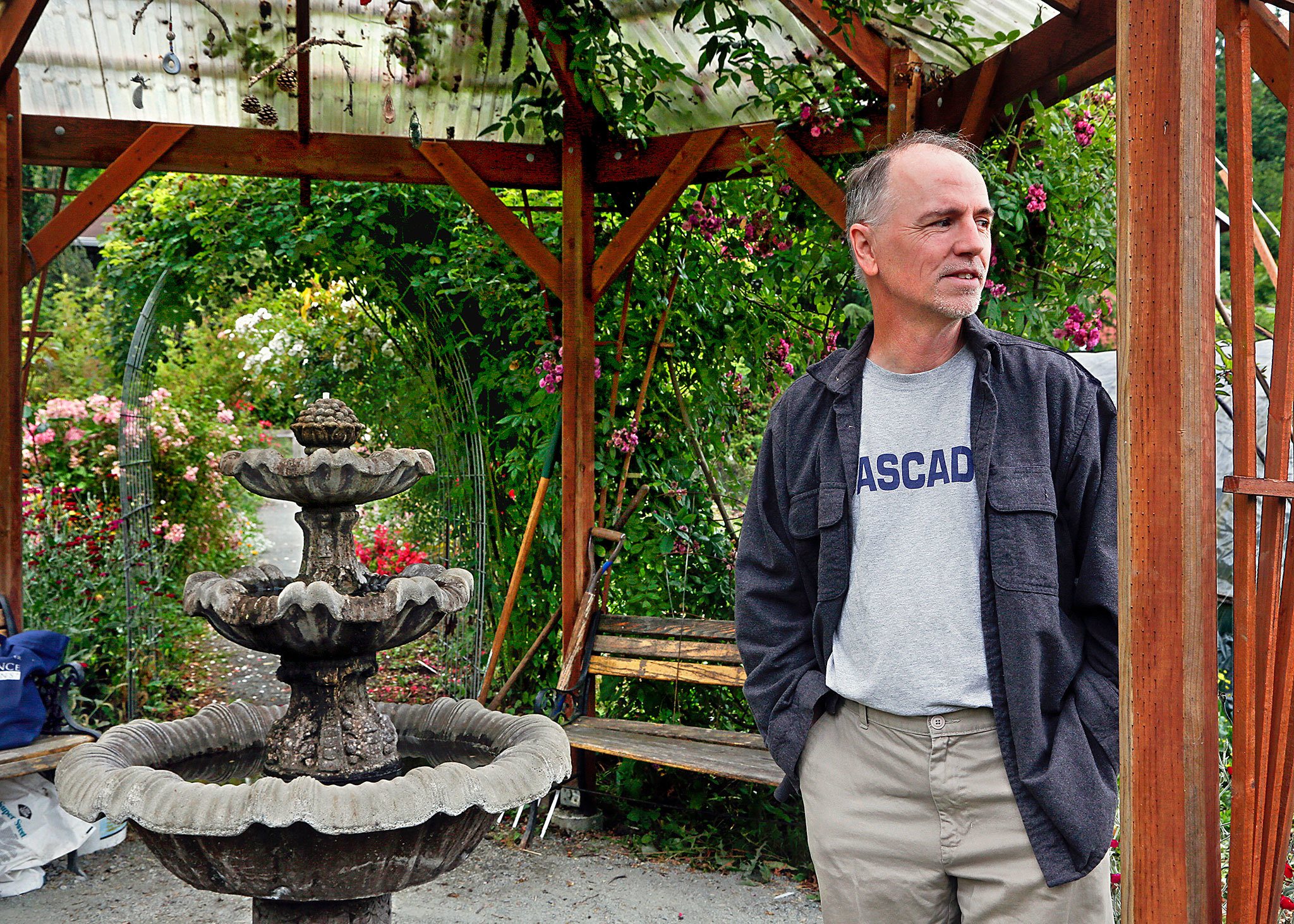BOTHELL — A group of dreamers banded together in the late 1980s to buy a few acres of woods outside of town and to build their own neighborhood around shared values.
They would live gently on the land, reaping the bounty of a collective garden. Their take on the suburban subdivision would welcome visitors from near and far, to teach lessons about organic farming and new ways of building neighborhoods.
They named their home Songaia, meaning “song of the Earth.”
“They had an old-fashioned concept of community, where you knew your neighbors,” said Scott “Scotty” Buckley, a Songaia resident of more than a decade. “You wanted to help your neighbors when you could — more like a village 100 years ago than a modern suburb.”
The song of the Earth could soon be interrupted by bulldozers and nail guns.
As in many other parts of unincorporated Snohomish County, what was a rural landscape not long ago is undergoing a rapid transformation. Nowhere is that more apparent than on the outskirts of Bothell and Mill Creek, currently the hottest market for new homes in Washington. Songaia’s environs near 39th Avenue SE and 228th Street SE are no exception. Housing developments are proposed to either side.
“We know this land will be developed,” said Brian Bansenauer, who moved into Songaia after the first homes were built in 2000. “We need more neighbors.”
Bansenauer and many other residents of Songaia are professionals who made a choice to live a particular lifestyle. He’s an information technology instructor at Cascadia College. Buckley makes a living inventing biomedical devices. Their neighbors include a nurse-midwife and an architect certified in ultra energy-efficient passive houses.
They hope any new homes respect their way of life.
The neighborhood’s more than three dozen people live in 13 houses that encircle a shared yard, or commons. Life revolves around the garden and group dinners. A yurt on the 12-acre property is the base camp for the Rite of Passage Journeys wilderness programs. Interns come from Bastyr University, the University of Washington Bothell and a worldwide exchange program to learn the techniques of permaculture, a type of farming that strives to be self-sustaining. There’s a waiting list to move in, when a rare vacancy arises.
To either side, new subdivisions are working through the approval process.
Crestmont Place would put 25 homes on 4-plus forested acres with a wetland along Songaia’s northern property line. Parkview Ridge would put 54 homes on 9.5 acres immediately to the south, where there used to be homes on lots of one acre or larger.
During a neighborhood meeting, the top concern was integrating the new developments with the existing community, said Patrick Paul, an architect who has lived at Songaia for more than a decade.
They don’t want fences; they’d rather connect to new neighbors via walking trails and edible gardens. They hope the fronts of the new houses turn toward them, not away. They’d like the chance to buy lots or houses in the new community to steer things their way.
It’s been tough to sell to the developer.
Conversations have been ongoing between Songaia members and a representative from Pacific Ridge Homes. The Bothell company was bought last year by national homebuilder D.R. Horton, of Fort Worth, Texas. A local representative declined to comment for this story.
In June, the neighborhood lost an appeal that challenged Snohomish County’s approval of the Crestmont Place project.
Hearing examiner Peter Camp ruled that the proposed development was in compliance with environmental rules. Camp granted a request for higher density. He allowed the developer to narrow a landscaped buffer on the property line to 10 feet wide, from the 15 feet specified in code.
Buckley was disappointed. The Songaia resident wondered why there weren’t more safeguards for trees. He questioned Camp’s decision to apply wetland standards from 2004, rather than more restrictive standards from 2014. In his ruling, Camp noted there was a lack of clarity in county code about which rules should apply in this case.
Buckley said the ruling doesn’t protect the environment, only developers’ financial interests. For him, it’s not an either-or choice.
“I think it’s possible to have houses and trees,” he said.
Songaia appealed the ruling. The County Council is scheduled to review the decision Aug. 31.
In July, Songaia was back in front of Camp to appeal Parkview Ridge. During testimony, they brought a bouquet of flowers to place on the witness stand.
At the outset, Camp made his role clear: He could only consider the law as written, not as he’d like it to be.
“My authority is limited,” he said.
Tom Campbell founded the Clearwater Commons community near the Bothell-Everett Highway. His neighborhood is part of the same cohousing movement as Songaia and they share many values. As an author of parts of Washington’s Growth Management Act in the 1990s, Campbell thought weight should be given to Songaia as an earlier arrival.
“It’s a textbook case where a special, existing neighborhood should be accommodated and an automatic rezone should be questioned so that the neighborhood’s character can be protected,” he said.
That hasn’t always happened in practice, as state development laws also encourage higher densities in areas designated for urban-style growth.
Bansenauer said it’s sometimes difficult to convey what Songaia means to people who call it home. They’ve spent years building up the soil in the garden. More importantly, there’s a spiritual connection.
“There are ashes of folks who lived and died here on the property,” he said. “This isn’t just any place — it’s a place where so much intensive work has gone in. A lot of what’s going on here is a sense of place. It’s not just transportable.”
Noah Haglund: 425-339-3465; nhaglund@heraldnet.com. Twitter: @NWhaglund.
Talk to us
> Give us your news tips.
> Send us a letter to the editor.
> More Herald contact information.

























